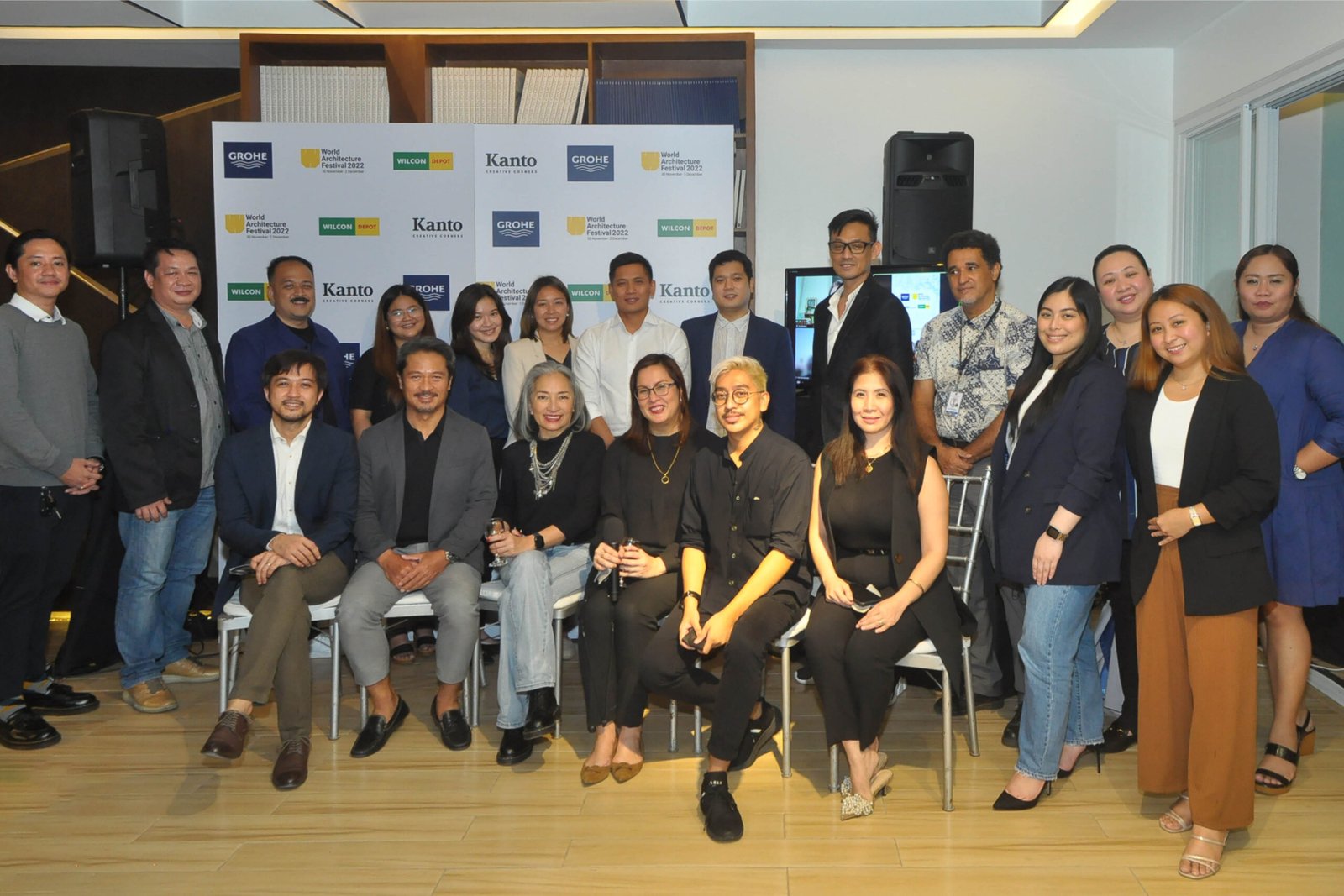Words Miguel R. Llona, Patrick Kasingsing and Judith Torres
Images WAF, GROHE Philippines, and Wilcon (Arnold Ologuin)


It may be old news for some at this point, but the Philippines’ World Architecture Festival (WAF) journey grows more remarkable with each passing year. What began with a lone entry in 2014—with Manny Miñana’s Villa Marina—has since kept multiplying as more and more architects feel emboldened to represent the country in the world’s biggest architecture and design competition.
2022 saw a continuation of an upward trajectory in Philippine representation at the WAF, with eight Pinoy firms shortlisted for 10 projects. While this year’s batch of Pinoy architects did not fare as well as last year’s, one couldn’t fault a lack of support and effort for the outcome. GROHE’s ever-present patronage and Kanto’s preparation of private practice crits helped prepare the shortlisted architects for their WAF journey, as did the words of encouragement to the finalists by respected personalities in the architecture and design industry. Topping these off, House Resolution 606 from the Arts, Culture, and Creative Industries Bloc (ACCIB) of Congress saluted the architects just before WAF kickstarted in Lisbon, recognizing their achievement and giving them a boost of confidence.
For yet another year, the WAF proved to be a uniting force among architects, patrons, and industry shakers in advocating the global competitiveness of Philippine architecture. As encapsulated by Andy Locsin of Leandro V. Locsin Partners (LVLP) in his closing remarks during the practice crits, “Some of [our architects] are already at the boarding gate, and I feel that in the next couple of years, torches will be passed. Hopefully, that generosity remains, and we don’t retreat to old habits like protectionism because the more we share, the better we get, and the discourse is elevated, so at the end of the day, you have a better Filipino architect. When you raise the bar for one, you raise the bar for all.”
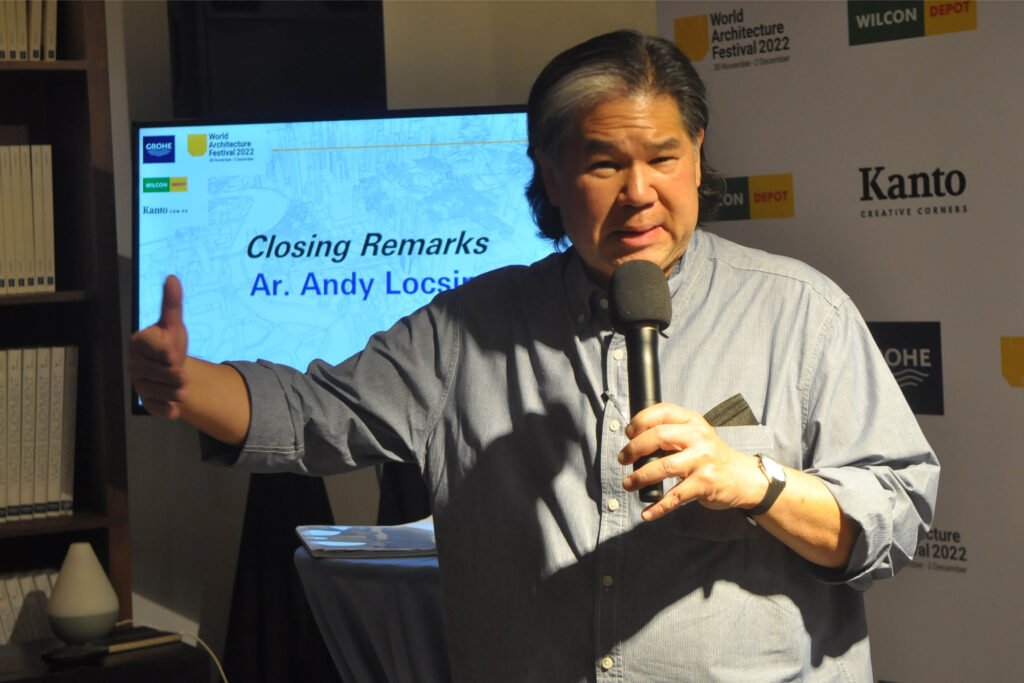



GROHE’s support
GROHE has long been a huge part of the generosity that Locsin referenced. With the brand being the WAF’s founding partner, its Philippine office has remained committed to supporting events and practice sessions for Filipino WAF finalists, and 2022 was no exception.
Since the first time they sent off WAF finalists in 2015—a simple event held at their Libis showroom—GROHE’s send-offs have only grown bigger, in part due to the swelling number of finalists each year. There was no opportunity to hold face-to-face practice crits in 2021 due to COVID-19 restrictions, so the chance for finalists and practice crit jurors to interact in person was eagerly welcomed by all concerned this year.
Private practice crits have become a yearly tradition, whose purpose is to help the finalists refine their presentations and anticipate difficult questions that may come up during the competition. Mock jurors are assembled to critique the finalists’ presentations just as WAF jurors would and to coach them—the former something many Filipinos bristle at, as criticism is often equated with fault-finding and bashing and is discouraged by no less than the UAP’s code of ethics. Fortunately, all the Pinoy finalists, especially this year’s three newcomers, were more than eager for their work to be critiqued by some of the brightest minds in Philippine architecture. It is also fortuitous that Kanto found the perfect coverage partners in GROHE Philippines, who are just as resolute that the annual mock crits tradition is done only for the benefit of the finalists. LIXIL marketing leader Emily Rose Besavilla went the extra mile with GROHE brand leader Arian Zaragoza to organize the mock crits with Kanto in the waning shadows of the pandemic, the partnership’s first face-to-face event in three years.
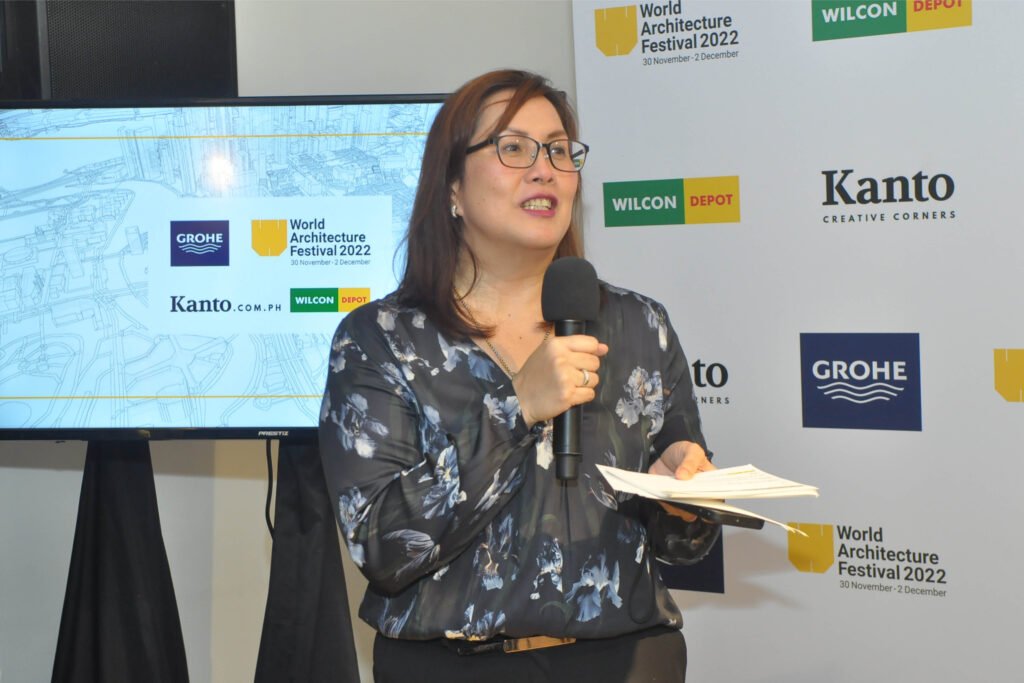
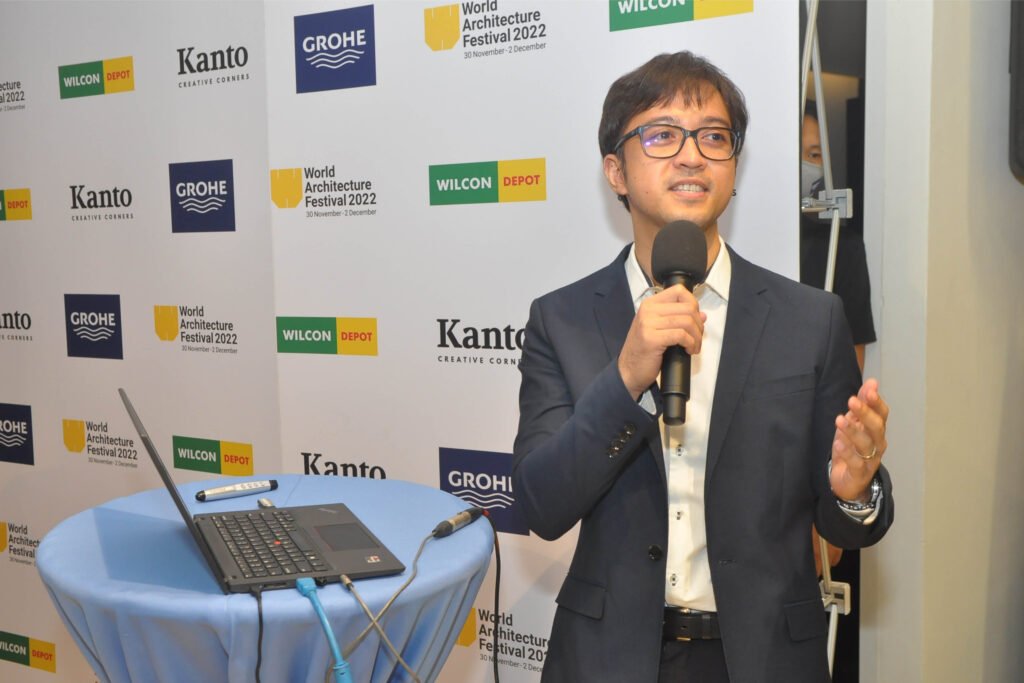
Road to the competition
This year’s crits were held at GROHE’s showroom on the 3rd floor of the Wilcon IT Hub in Pasay City on October 25 and November 5 (the latter was supposed to take place on October 29 but was moved due to Typhoon Paeng). With the 2022 batch of Pinoy architects being a healthy mix of WAF veterans, repeat finalists, and first-timers, assembling the right mix of mock jurors proved to be tricky on top of the usual scheduling difficulties.
But when called upon, the usual suspects stepped up to the plate. Despite being a finalist shortlisted for two projects, Benjee Mendoza of BAAD Studio kindly agreed to be a practice juror and lend his wisdom as both winner (2018) and four-time WAF juror Sudarshan Khadka of Leandro V. Locsin Partners, another experienced veteran and winner (2017) at the WAF, generously made time for both crit dates as well, together with Andy Locsin, who offered sage advice to finalists on the first day. Joseph Javier, the Dean of Architecture at the College of St. Benilde, critiqued the presentations on the second day, and the husband-and-wife tandem of Dominic Galicia and Tina Periquet popped in for several presentations as well.
There were new jurors who answered the call even though they were in a different region or time zone. Charlotte Lao Schmidt, a Bohol-based spatial designer, served as a juror for Dryan Tria and William Ti, and Royal Pineda via Zoom. Neil Bersabe of BERSABARC Design Studio had requested an expert in computational design, so rat[LAB] co-founder and designer Sushant Verma, based in India, offered his thoughts on Bersabe’s Martian Colony project through a one-on-one online session. For Daryl Refuerzo’s presentation, Erik Akpedonu of ICOMOS Philippines served as one of his jurors and provided valuable insights on what a WAF jury could ask regarding adaptive reuse projects.



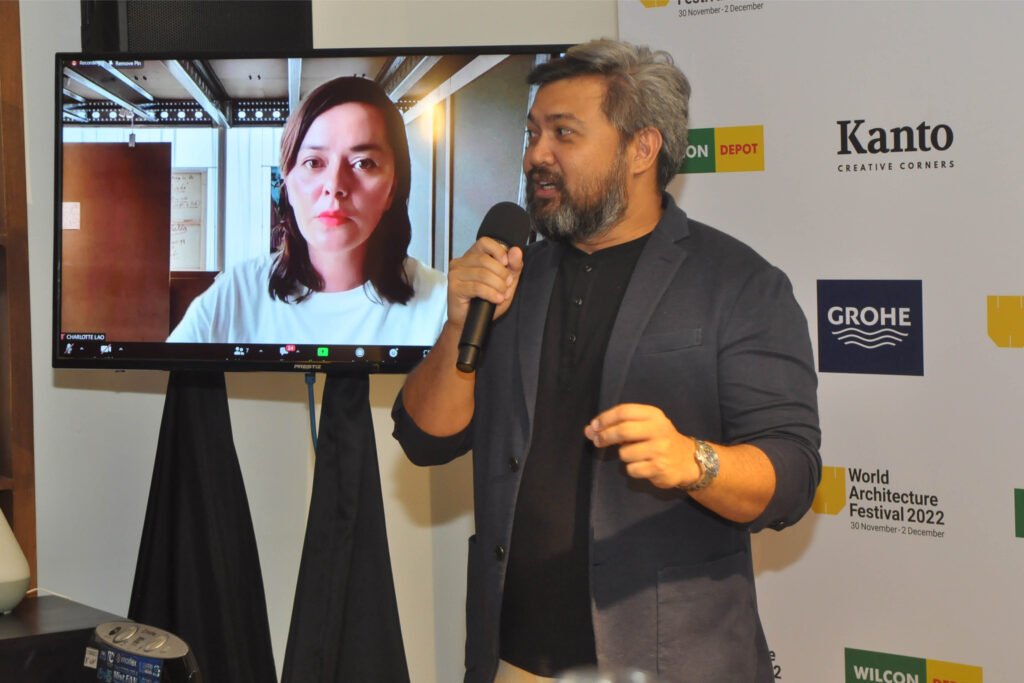
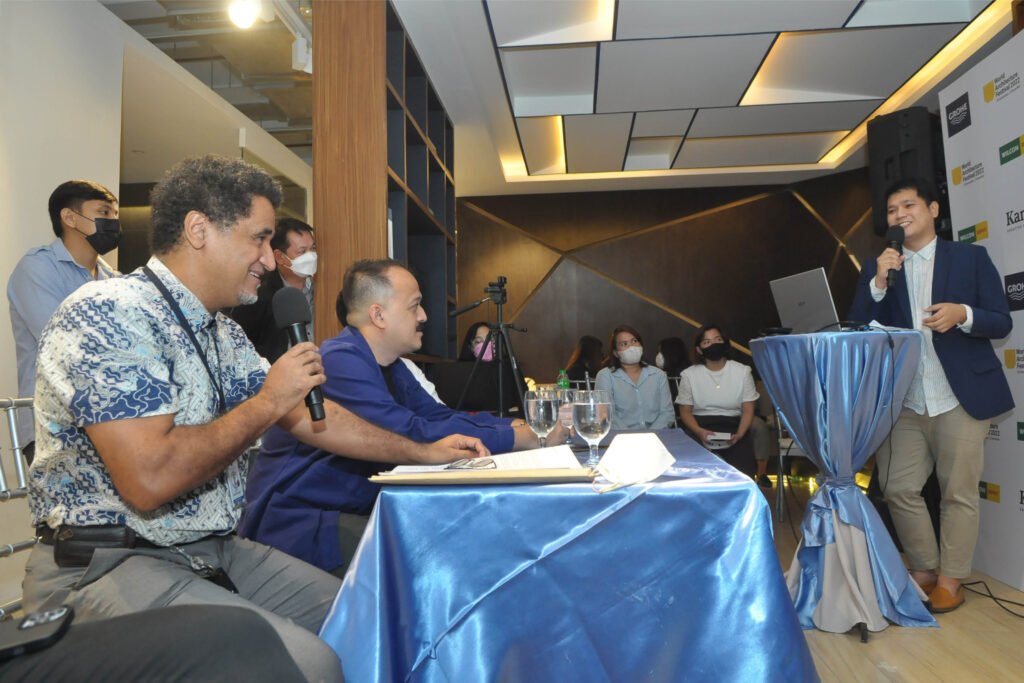

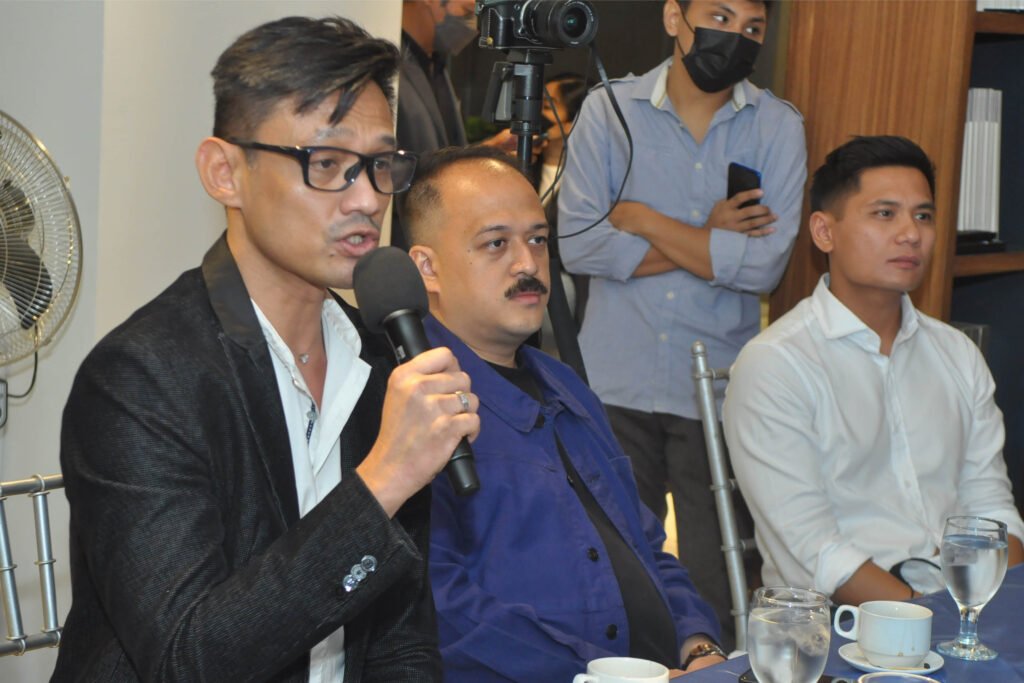
It was an inspiring culmination of support and collaboration among great minds to assist the finalists to perform well on the global architecture stage. Seeing the finalists absorb the knowledge and feedback from their practice jurors boded well for their prospects in Lisbon for the actual crits.
“The value is in the work and not in seeking recognition,” reminded Andy Locsin during the closing remarks on the first day of the crits. “Somewhere down the line, if you think of submitting to WAF again, submit it for the right reasons. It’s not just for the badge; it’s because you have something to show the world, a different path.”
Support didn’t end after the mock crits—far from it! GROHE went above and beyond for their WAF charges, with Besavilla regularly contacting shortlisted entrants and the Kanto media contingent on their visa status and travel arrangements, even readying contingencies should visa applications go south.
The Kanto WAF Viber group created by Kanto editor-at-large and head WAF Pinoy cheerleader Judith Torres pinged with more frequency as the festival dates approached; Kanto, GROHE, and WAF veterans assured this year’s batch that they were ready for the battle to come.


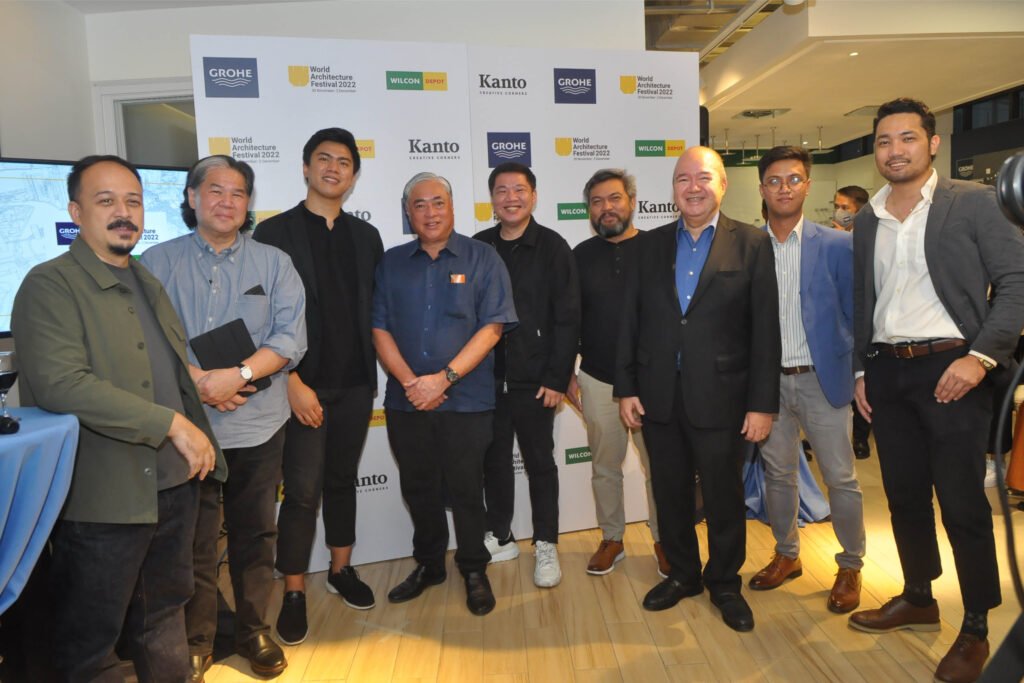



Lisbon cheerleaders
Come show time, Kanto and GROHE were there to welcome the finalists in chilly Lisbon, and whilst the weather proved to be a bane for some of our finalists (and locals alike), there was none of the chill from the WAF jury for our Pinoy entrants. The reception to their presentations was warm and encouraging. Entrants showed a marked improvement in their presentations from when they first took the stage on the GROHE-Kanto mock crits, and it gave our coverage partners and us familial pride, almost as if we were parents watching our children perform at their best.
“‘PK, upo ka rito mas maganda yung view (sit here, the view’s better),’ Heide Lopez, project and sales leader for GROHE and INAX would often tell me as I looked for vantage points from which to watch the crits within WAF’s iconic igloos,” recounted editor-in-chief Patrick Kasingsing. “She was GROHE Philippines’ Lisbon wonder woman, who made sure we were all complete for crit sessions, had matching GROHE water tumblers and coffee, and even ensured that each member of the team had packed lunches!”


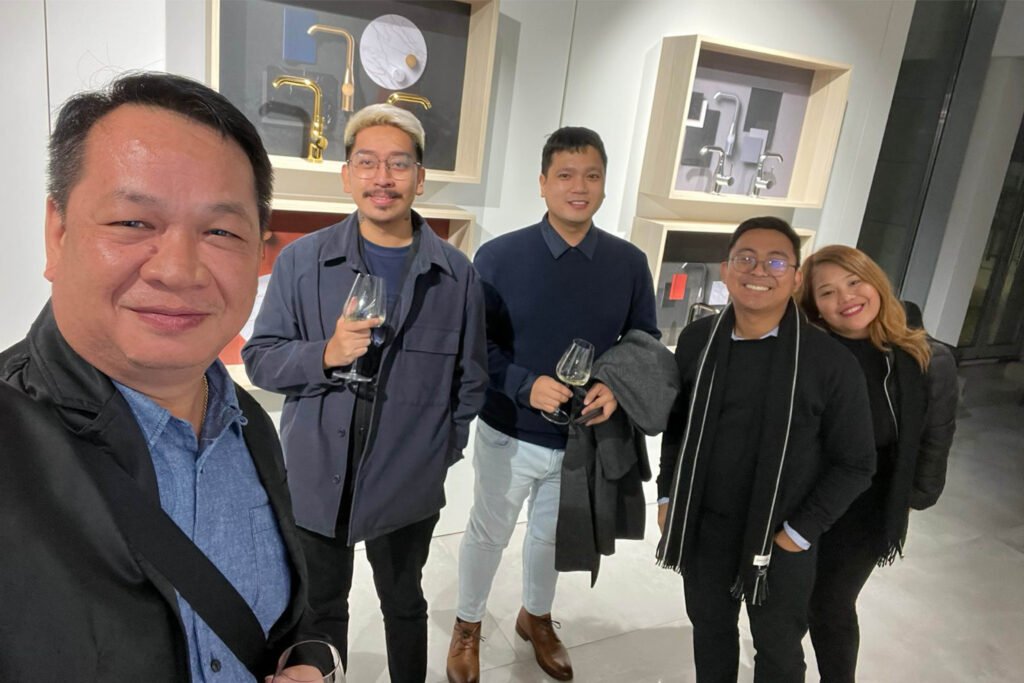


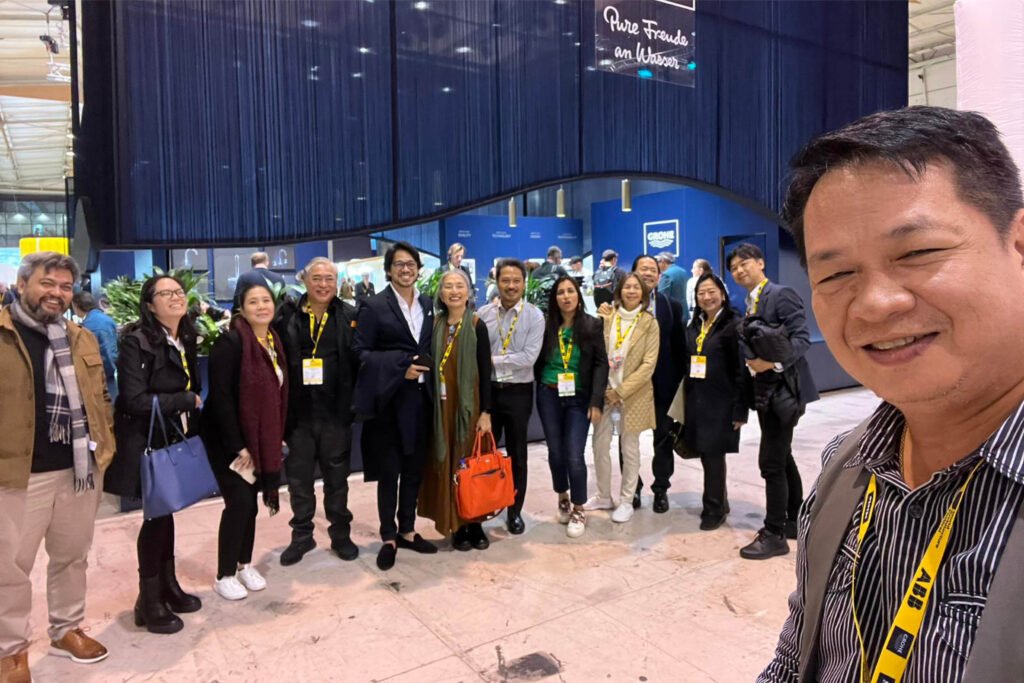

She and LIXIL country general manager Hermie Limbo attended all the crits, even saving seats for the Philippine contingent, who showed heartwarming support for their compatriots. The GROHE Pavilion amidst Hall 4 of FIL Lisboa served as the Pinoy party’s de facto headquarters at the WAF. “Treat the GROHE Pavilion as your home in Lisbon,” Limbo told our Pinoy WAF finalists at a welcome dinner at the GROHE Lisbon Experience Center.
We would be remiss in failing to note Wilcon Depot project manager Arnold Ologuin’s contributions as the Pinoy delegation’s unofficial photographer; Arnold never failed to gather us folks together after every crit or a moment’s lull for a groufie, of which we have many, all thanks to him!
Business is business, but the bond Kanto’s editors and GROHE have forged goes beyond targets and numbers, homing in on a shared goal that’s been a source of collaboration for almost a decade. Our host at the dinner, Satoshi Konagai, Leader LIXIL Water Technology for Asia Pacific, remarked on the solidarity of the Philippine contingent. He said our country is the only one he knows of where established architects and WAF veterans help finalists prepare for the competition, and he commended the GROHE Philippines team for supporting these efforts.
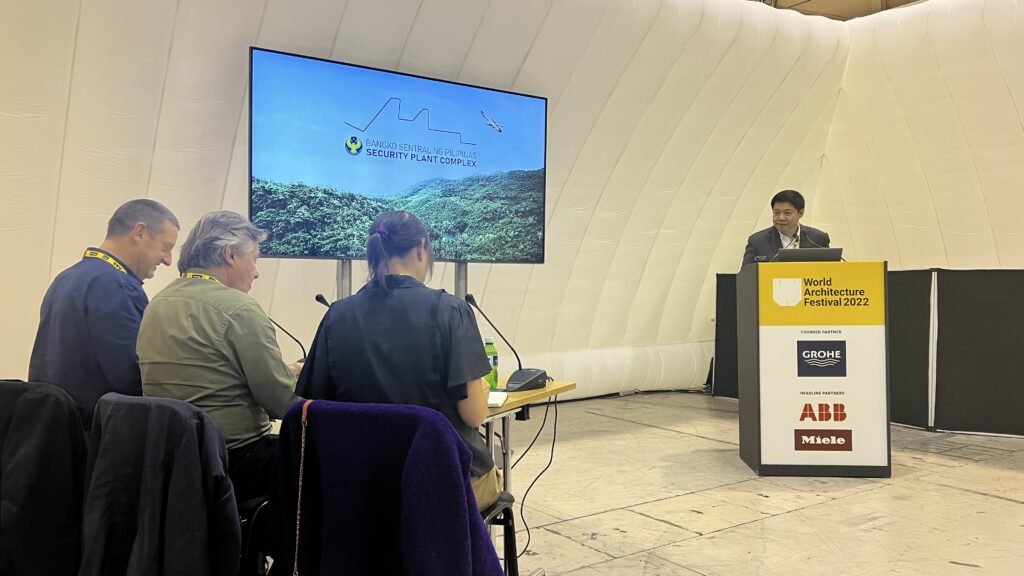

Doing us proud
WTA Architecture and Design Studio
When William Ti won WAFX Project of the Year last year, Kanto’s WAF Viber group exploded with congratulations and lots of good-natured ribbing. Bong Recio was among the first to greet the winner: “We are Titilated with pride, William. Mabuhay ang World Architecture Filipino!”
Ti performed admirably this year as he did last year, answering questions directly and concisely. And while it was disappointing that his two entries didn’t win, it’s worth mentioning that one of Ti’s jurors approached the architect after his crit and urged him to enter the Batangas Forest City to WAF again when it is implemented, as it stands a good chance of winning—that is, if implemented as envisioned.
Ti is optimistic it will be. Ti says his multiple wins in WAF, Architizer A+ Awards, the German Design Council’s Iconic Awards, and the International Architecture Award, among others, “have given me a stronger voice. It shows that we know what we’re doing and that we speak at a global level. More importantly, it shows Filipino ideas can be part of the global discussion on planning our cities and how humanity can move forward.”
Because he won last year, Ti was invited to serve as a juror this year, which he did on Day 2 of the WAF, critiquing finalists in the Transportation Category.


BERSABARC Design Studio
Neil Bersabe was a revelation! Whatever uncertainty and hesitation he showed during the practice crits was gone in Lisbon. He seemed to have anticipated all the questions the jurors asked and displayed an exceptional level of preparation and even familiarity with the conditions on the planet Mars as the jurors inquired about his choice of the site or the effect of gravitational pull (or lack thereof) on construction.
Bersabe’s igloo was crowded, not just by the Filipino contingent but also by foreigners taking photos of his slides and recording the crit. The Q&A started and ended with lighthearted kidding from the jurors asking Bersabe whether he had Elon Musk’s number and how to get to the Martian colony.
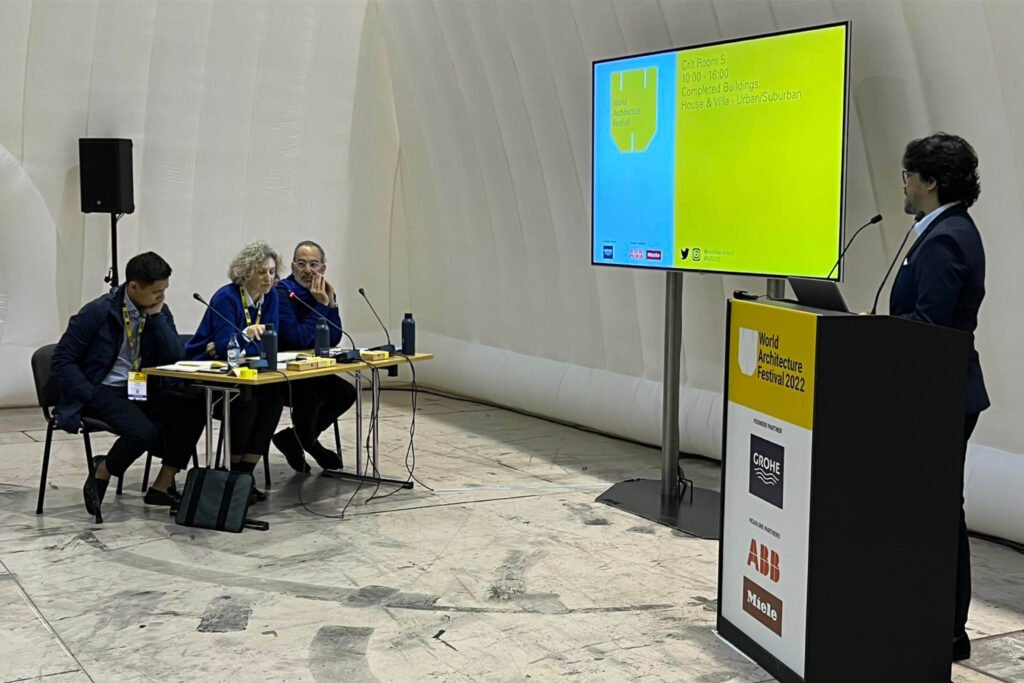

Royal Pineda +
Royal Pineda, Jorge Yulo, and HANDS Studio received warm compliments during their crits too. Pineda, who was scheduled to present at 2:40 in the afternoon on Day 2, was at Crit Room number 5 at 11:00 in the morning to watch Yulo’s crit when the head juror announced, “And next is Royal Pineda to present the Pandemic House,” a complete surprise that Pineda took with admirable equanimity.
“That is a very sensible house you have designed,” the lead juror said after his presentation, “with or without a pandemic,” a compliment that delighted Pineda, who then explained that the house was designed before the pandemic yet ticked all the right boxes in addressing health and wellness concerns, as well as quarantining needs should any member of the family get sick.
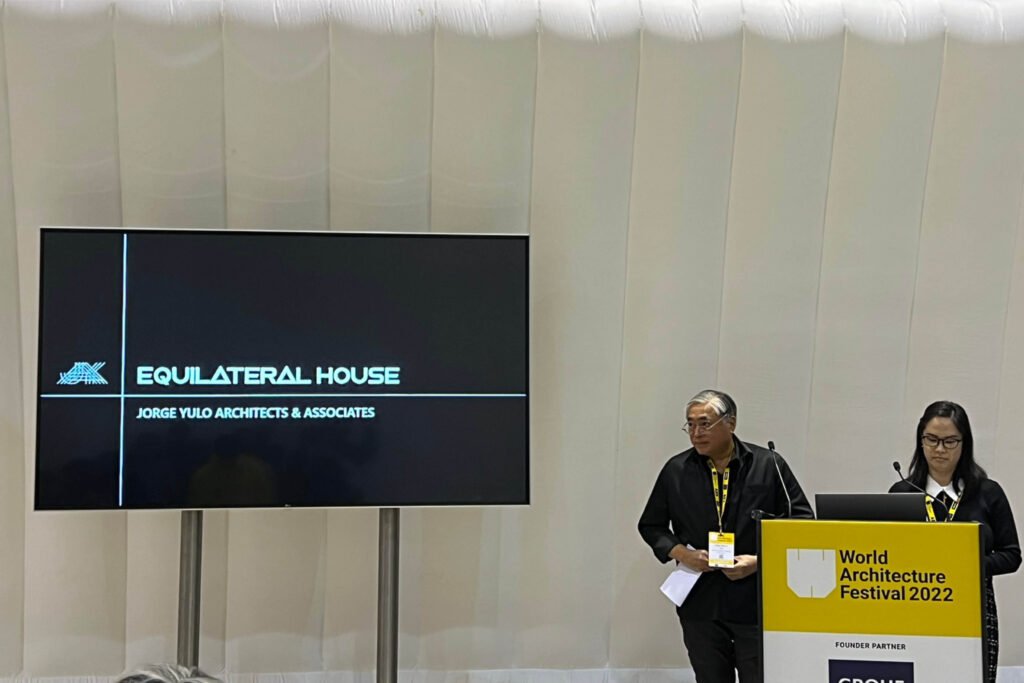

Jorge Yulo Architects and Associates
The biggest disappointment, where Kanto editor-at-large Torres was concerned, was Yulo’s loss in the House & Villa, Urban Category. “This is just what I feared for Jorge,” said Torres, who predicted the WAF jurors would be disinclined to commend a house so conspicuously expensive and time-consuming to build. “You know that when a juror says, ‘Of course, there’s nothing wrong with being posh,’ that being posh is certainly a problem,” said Torres after Yulo’s crit.
Torres added: “The jurors expressed awe over the sumptuous detail and execution of the Equilateral House, but the wonderment was overshadowed by concerns that it didn’t surmount challenges like a small site, difficult terrain, tiny budget, and complicated client requirements. Even though it used recycled materials, observes passive cooling, and embraces nature in all its moods, it didn’t help that it was a big house for a small family in a wealthy gated community. It wasn’t overtly championing a cause but an aesthetic agenda.
“I remember Andy Locsin telling me, ‘Juries today will likely loathe being supportive of aesthetic theories… while still, of course, important to some particular clients’ ambitions, the overwhelming concerns about design responsibility regarding the “different world” we are walking into will be at the forefront of most thinking jurors’ minds. So critical to understand that, and therefore be able to frame any entry in those terms.’
“Andy, Sudar, and Dom were optimistic—I think we all were—that Jorge addressed those terms during the practice crit, right, but it’s really tough to win against a project with a modest budget that overcomes tremendous odds and contributes to the community. Still, Jorge did us proud because the project was so clearly ‘designed and executed with passion and care,’ as the jurors acknowledged.”


HANDS
Perhaps one of the most heartwarming comments we heard at our finalists’ crits was by lead juror Viviana Muscettola of Zaha Hadid Architects, who told husband and wife Yonni Habúlan and Maricris Ngo that she liked the way they think and “to continue on your path.” It was particularly rewarding since the jury was outspoken about their disapproval in several previous crits (notably of luxury hotels).
Editor-in-chief Patrick Kasingsing recounts: “The HANDS principals gave a smooth-sailing presentation that legibly unpacked Casa Tropica and its intentions. The project’s unique form, the humility of materials, and the inclusion of the immediate community in its construction were things the jury welcomed and found refreshing about the project. James Twomey of Reardon Smith gave useful insights about market segmentation in the hospitality sector and asked HANDS which market the hotel targeted. Habulan responded that it was geared toward city dwellers and locals.”
Muscettola admired the studio’s responses to the complexities and constraints the project addressed, an opinion echoed by Trevor Boddy of Trevor Boddy Consulting. “You didn’t go the easy route, which would have been cheaper and boring,” said Muscettola.
Torches being passed
The collective experience of the Pinoy finalists would only serve them well in their practice, particularly for first-time finalists. About his experience, Daryl Refuerzo said: “It was exhilarating to be with these architects, to share the room with like-minded people. WAF, see you next year!” Asked why joining the competition was worth the USD 1000 entry fee and the cost of travel, Studio Fuerzo’s principal replied: “Media mileage, exposure, and networking opportunities. I’m going to talk to someone about exhibiting in Venice next year. Should it push through, that’s more than enough ROI!”
Awards are important, but as Locsin said in the Kanto WAF group chat, they are not the end-game: “The proof of the pudding is in the eating—some of these projects have to be realized—the beneficiaries of these efforts still have to be Juan de la Cruz, and there’s an entire culture of design, building, funding, and social values that have to be changed and influenced. There’s work to be done to get this kind of thinking absorbed into the institutions, clients, proponents, and grassroots. Still an uphill ramp to climb, kids.”
To which Tina Periquet added: “All true—and looking around us, it’s more of a cliffside than a ramp. But for now, let’s allow ourselves to daydream of a future in which we can live our lives in a rich, vibrant and civilized environment that actually works well and makes sense!”


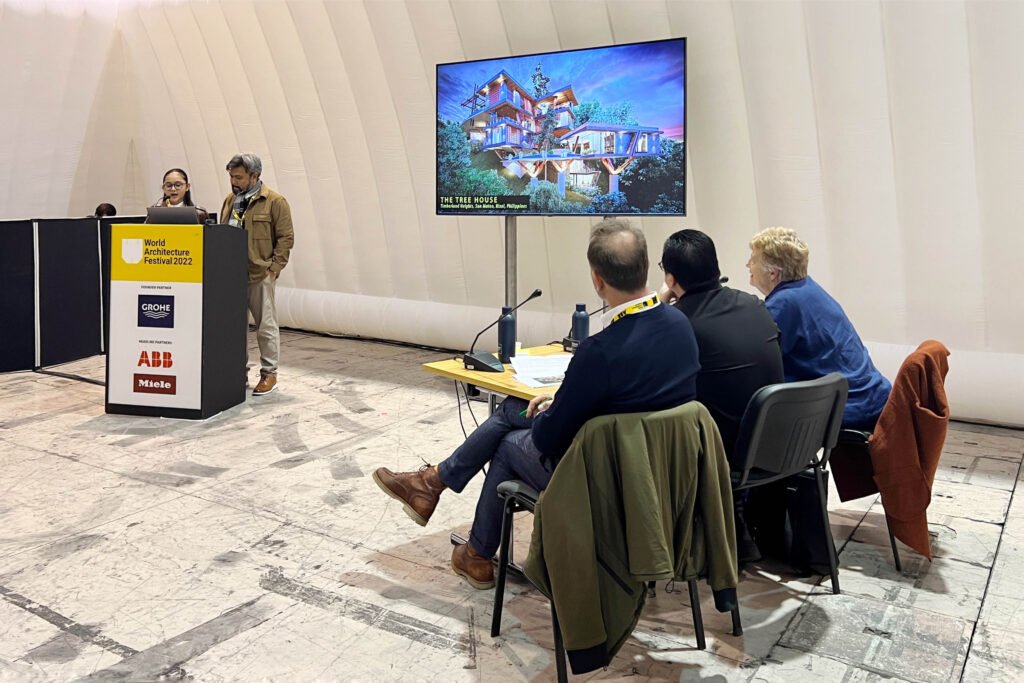

First-time finalist Dryan Suiza Tria was struck by the solidarity, positivity, and fun he witnessed in the Pinoy WAF community: “It was a great WAF experience and truly a lot of learning. We may not bring home the ultimate prize, but it is the intangibles that we will bring home with us that truly matter. Congratulations to all of us! I have witnessed a great showing of support and unity as Filipinos; needless to say, these gains are greater than the physical prize.”
We may not have won awards this year, but we in Kanto feel the Philippines is making headway. There is recognition that Filipinos have a voice and ideas to contribute to making the world a better place. Festival director Paul Finch himself has taken note of the country’s growing number of finalists. “What’s happening in the Philippines?” he asked William Ti last year.
“I saw Jonathan Rose of Prior + Partners, the architect-urbanist who was William’s juror last year, come to watch William’s crit. He wanted to see what Will’s new master plan was about. I also saw jurors welcoming and chatting with Benjee Mendoza as a colleague. Call me mababaw, but it felt good,” Torres said. “One juror, Katelin Butler, editorial director of Architecture Media, told me she watched Benjee’s presentation in 2018 and appreciated the values BAAD espouses, so she invited him to speak at one of their events in Melbourne. We need more exchanges like this.
“Every Pinoy finalist, whether they intend to or not, represents the best of the country when they present at the WAF. The challenge is always whether what is perceived as the best we’ve got is indeed excellent and true. It’s a responsibility every finalist must take seriously,” Torres concluded.
Ti summed it up well when Kanto asked him to give the closing remarks at the end of the practice crits at GROHE’s showroom. “What we need is to be out there more. I always keep in mind that we have so many kababayans out in the world, and we want to elevate how people see our overseas workers. So the more we show our pursuit of excellence, the more chances they will be elevated and respected.” •
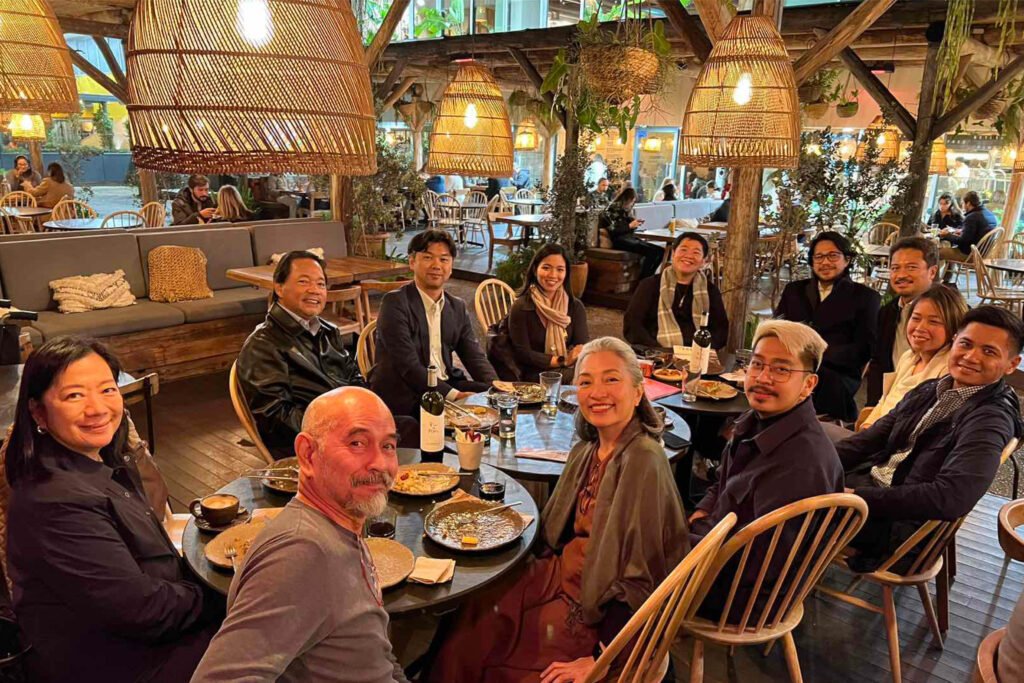

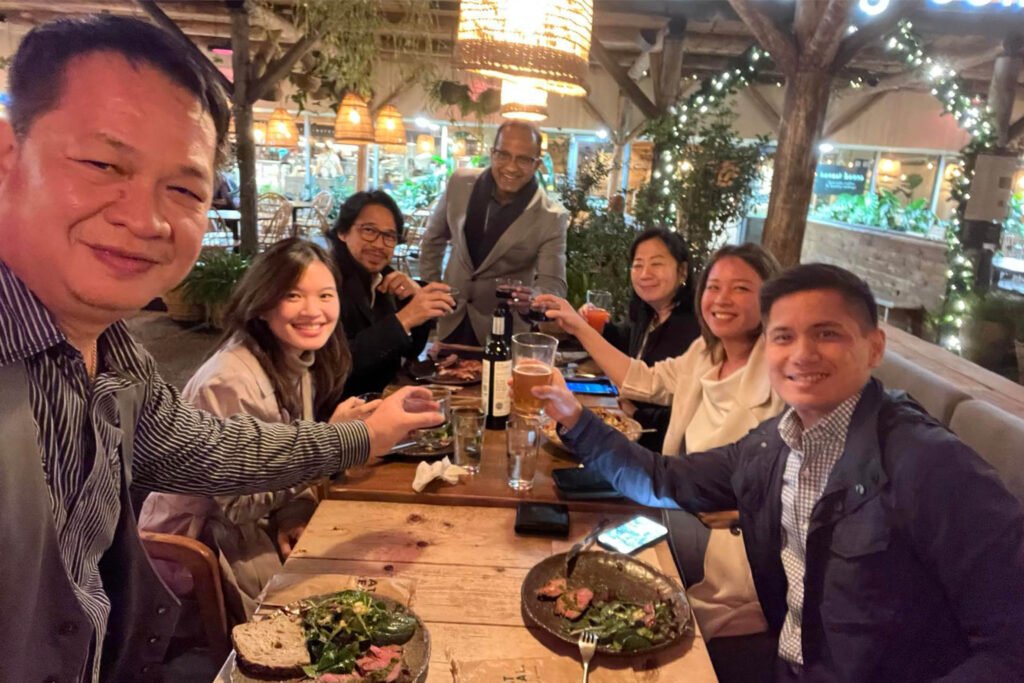
Thanks to GROHE Philippines for sponsoring the practice crits that Kanto organized for Filipino WAF finalists. Your support is building a community of architects and designers who believe in life-long learning and critical thinking.


